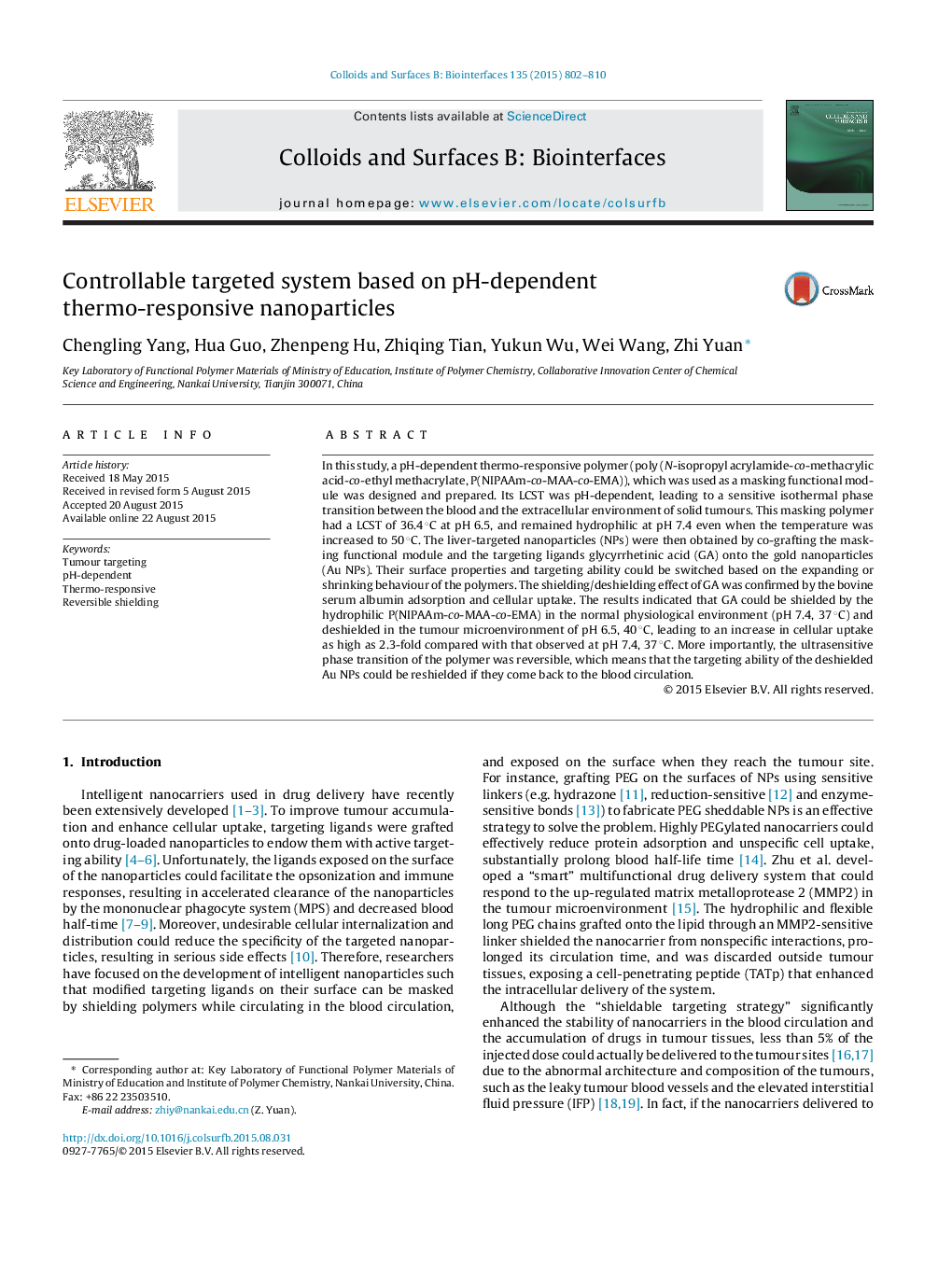| کد مقاله | کد نشریه | سال انتشار | مقاله انگلیسی | نسخه تمام متن |
|---|---|---|---|---|
| 599308 | 1454269 | 2015 | 9 صفحه PDF | دانلود رایگان |

• The pH-dependent thermo-responsive polymer was designed and prepared.
• The LCST of the well-designed polymer was pH-dependent.
• Surface properties and targeting ability of NPs could be switched within slight pH and temperature changes.
• The shielding/deshielding of targeting ligands was reversible.
In this study, a pH-dependent thermo-responsive polymer (poly (N-isopropyl acrylamide-co-methacrylic acid-co-ethyl methacrylate, P(NIPAAm-co-MAA-co-EMA)), which was used as a masking functional module was designed and prepared. Its LCST was pH-dependent, leading to a sensitive isothermal phase transition between the blood and the extracellular environment of solid tumours. This masking polymer had a LCST of 36.4 °C at pH 6.5, and remained hydrophilic at pH 7.4 even when the temperature was increased to 50 °C. The liver-targeted nanoparticles (NPs) were then obtained by co-grafting the masking functional module and the targeting ligands glycyrrhetinic acid (GA) onto the gold nanoparticles (Au NPs). Their surface properties and targeting ability could be switched based on the expanding or shrinking behaviour of the polymers. The shielding/deshielding effect of GA was confirmed by the bovine serum albumin adsorption and cellular uptake. The results indicated that GA could be shielded by the hydrophilic P(NIPAAm-co-MAA-co-EMA) in the normal physiological environment (pH 7.4, 37 °C) and deshielded in the tumour microenvironment of pH 6.5, 40 °C, leading to an increase in cellular uptake as high as 2.3-fold compared with that observed at pH 7.4, 37 °C. More importantly, the ultrasensitive phase transition of the polymer was reversible, which means that the targeting ability of the deshielded Au NPs could be reshielded if they come back to the blood circulation.
Figure optionsDownload as PowerPoint slide
Journal: Colloids and Surfaces B: Biointerfaces - Volume 135, 1 November 2015, Pages 802–810